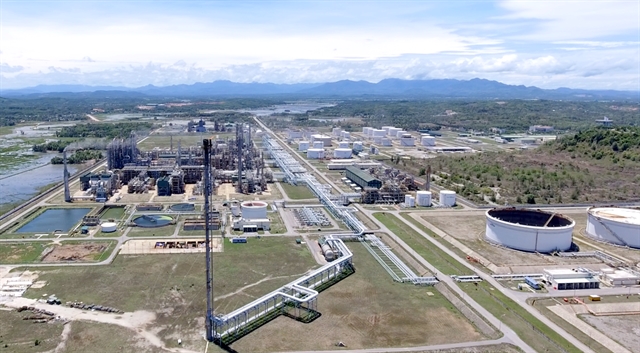
HÀ NỘI — Airport development planning should prioritise investment in key projects and have rigorous standards for project approval, experts have said.
According to a draft master plan on the development of the national airport network to 2030 with a vision to 2050 from the Civil Aviation Administration of Việt Nam (CAAV), Việt Nam is set to 26 airports by 2030, including 14 international airports. The number could reach 30 by 2050, including 15 international airports and 15 domestic airports.
Total investment for planned airports in 2020-2030 is estimated at about VNĐ365.1 trillion (US$15.87 billion), with an additional VNĐ866.36 trillion needed for 2030-2050.
The capital will come from official development assistance (ODA), the State budget, and also be mobilised from loans from financial institutions and public-private partnership projects.
In 2030-2050, four new airports will be prioritised for development, including the second one in Hà Nội and three others in Lai Châu City of Lai Châu Province, Na San of Sơn La Province, and Cao Bằng City of Cao Bằng Province. All of them are in the north.
Also in the draft master plan, some provinces and cities have proposed developing airports in 2021-2030 by converting facilities from military airports into civil airports such as Ninh Bình, Bình Phước, Bắc Giang, Hà Giang, Ninh Thuận and Hà Tĩnh provinces, according to the Ministry of Transport.
Meanwhile, others have proposed converting their existing domestic airports into international airports, including Liên Khương Airport in Đà Lạt City, Buôn Ma Thuột in Đắk Lắk Province, Phù Cát in Bình Định Province and Tuy Hòa in Phú Yên Province.
A representative from Transport Engineering Design Inc (TEDI) said the necessity and feasibility of a new airport will be decided based on six major criteria including travel demand, socio-economic development, national defence, natural conditions, and distance to other nearby airports.
Việt Nam’s airports are mostly harmoniously distributed nationwide, but in the northwestern and Central Highlands regions, people do not have an airport within a radius of 100km or some airports have lower/higher demand than designed capacity. Those issues should be considered carefully, said the representative.
According to Đinh Việt Thắng, head of the CAAV, the Ministry of Transport is collecting recommendations on the development of airports relating to four major issues, namely the number of airports, their structure and scale of airports and the State’s policies on airport development.
At present, 22 out of 63 provinces and cities have replied to the ministry about those issues and many localities proposed adding airports to the State’s airport development planning, Thắng said.
The administration’s point of view is that airports should not be developed en masse and the plan should concentrate investment in key projects and projects with large capacity and scale, he said.
According to Bùi Văn Võ from the Việt Nam Association of Aviation Science and Technology, the draft planning mainly aims to develop the system of airports serving commercial flights but does not include general and specialised aviation activities, reported the Vietnam News Agency.
At present, most airports in Việt Nam are mixed civil and military airports, so it is necessary to assess military flight operations in the planning. The plan also needs to determine which airports will be civil airports and to add specialised airport systems to the plan, Võ said.
Trần Kim Chung, Deputy Director of the Central Institute for Economic Management, said connecting infrastructure of other types of transport to aviation infrastructure must be considered in airport planning and investment.
The Ministry of Transport said demand for aviation transport by 2030 will be 276 million passengers and 4 million tonnes of cargo. Those figures will increase to 650 million passengers and 16 million tonnes of cargo by 2050.
Việt Nam currently has 22 airports, including nine international airports and 13 domestic airports, and no major transhipment airports at the international level. — VNS































